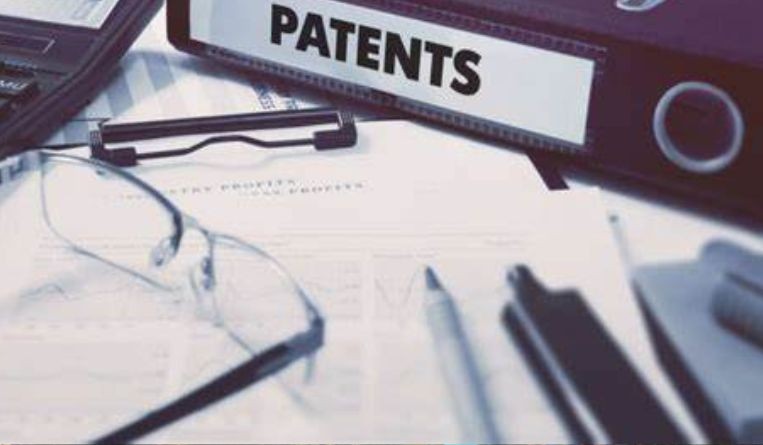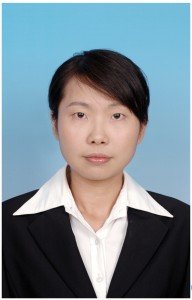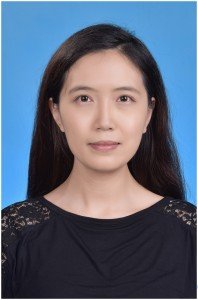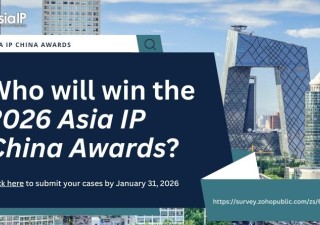A valid priority date draws a line in determining what references can and cannot be used as prior art against a patent application, which significantly impacts the determination of patentability. Xiao Ning, Chunjing Wang and Xia Zheng explain why foreign clients are facing complications of Chinese domestic priority claiming – and what to do about it.
Priority claim to an earlier-filed prior application is a common yet important part of filing. A valid priority date draws a line in determining what references can and cannot be used as prior art against a patent application, which significantly impacts the determination of patentability.
There are some special stipulations in China regarding priority claiming, especially for domestic priority claiming. With the increase of collaboration between Chinese and overseas enterprises, we note some clients abroad also face the complication of Chinese domestic priority claiming, e.g. the first application is filed with the CNIPA if the Chinese research center of a foreign enterprise has made the invention or a technology developed by a Chinese manufacturer is later acquired by a foreign party. Thus we would like to elaborate those rules and share a case where a patent is secured after two court trials.
Rules in claiming domestic priority
Before studying the case, let’s see the rules for claiming domestic priority first. And here we only talk about domestic priority relating to invention and utility model (UM) applications, rather than design applications. The following requirements should be met for a later-filed application to claim priority to an earlier-filed prior application:
(1) The subject matter of the prior application has not claimed any foreign or domestic priority, or, it had claimed a foreign or domestic priority but did not enjoy the priority;
(2) The subject matter of the prior application has not yet been granted;
(3) The later-filed application should be filed within 12 months from the filing date of the prior application.
Moreover, if the applicant claims a domestic priority, the prior application shall be deemed withdrawn from the date of filing of the later-filed application.
Fate of the earlier-filed prior application
When for a normal direct or Paris Convention later-filed application the applicant claims a domestic priority to an earlier-filed prior application and the examiner of preliminary examination finds that the priority claim complies with the requirements, the examiner shall issue a Notice of Deeming the Prior Application Withdrawn. The earlier-filed prior application deemed withdrawn cannot be restored.
Nevertheless, where the later-filed application is a PCT application which enters China at a later time, the consequence will be different. Under this circumstance the earlier-filed prior application will not be deemed withdrawn. If there is a possible double-patenting issue between the earlier-filed prior application and the Chinese national phase application, such issue could be dealt with in later substantive examination procedure.
In most cases, if the earlier-filed prior application is an invention application, there is rarely complication since within 12 months from filing an invention application is generally not published or examined, let alone allowed. While if the earlier-filed prior application is a UM application, there is possibility that the UM will be granted and announced within 12 months from its filing, which seems to fail requirement (2) above. Therefore, where the prior application is a UM application, whether the priority to the prior UM application can be successfully claimed is quite uncertain.
A case study for the validity of a granted utility model patent as priority
The particular case we are sharing is the situation in which the earlier-filed prior application is a UM and it has been granted and announced when the later application claimed priority to the same within 12 months from the filing of the UM.
The later application is a PCT application and it was filed with claims substantially the same as those granted in the prior UM. The priority claim of the Chinese national phase application of the PCT application to the prior UM was deemed by the examiner from the CNIPA as invalid in the Notification. Then, in response to such Notification, the claims of the Chinese national phase application were amended to be different from those granted in the UM and arguments were made with a major emphasis on the point that “subject matter” not granted should be qualified as priority basis. But the examiner still did not approve the priority.
The establishment of priority was crucial in this case. Since the prior application has already been published before the filing of the PCT application, if the priority is not established, the later application will be rejected simply because the granted UM can be used as prior art to destroy the novelty of the later application.
Since the examiner was not convinced, an administrative lawsuit was instituted. Our main arguments presented in the lawsuit are from the following aspects:
Rule 32(2) of the Implementing Regulations of the Patent Law provides: “when the later application is filed, if the subject matter of the prior application falls under any of the following, it may not be taken as the basis for claiming domestic priority: … (2) where it has been granted a patent right”.
The word “it” in “where it has been granted a patent right” in this rule should refer to “the subject matter of the prior application”, rather than “the prior application”.
With regard to “subject matter”, the Guidelines for Patent Examination, provides “An invention or utility model for the same subject matter as referred to in Article 29 of Patent Law means an invention or utility model of which the technical field, technical problem to be solved, technical scheme, and prospective effect are the same …”
The term “subject matter” includes: technical field, technical problem to be solved, technical scheme and expected effect, among which the technical scheme is the core element. “Subject matter” may correspond to the technical scheme defined in the claims of an invention or a utility model. If the technical scheme has not been granted in the prior application, claims defining such technical scheme in the later-filed application (i.e. our amended claims) could enjoy the priority to the prior application.
In addition, it should be understandable that the purposes of the Rule 32(2) and related regulations in the Guidelines for Patent Examination (which stipulate that the Examiner shall issue a Notification of Deeming the Priority Not Claimed for the later application where the subject matter of the prior application has been granted at the time of the filing of the later application) are to avoid double patenting. In our case, the amended claims in the later application are different from the granted claims of the UM and would not have any double-patenting issue, so the priority claim to the UM, even though the UM had been granted, should be established.
Further, the grant of the prior application does not mean the applicant’s right to claim the prior application as priority in a later application is lost or given up. The applicant still has the right to seek protection for other technical schemes that have not been protected in the prior application, even though the prior application has been granted.
The first trial was held by Beijing Intellectual Property (IP) Court and the court affirmed our arguments and judged that the CNIPA did not examine whether the subject matter of the Chinese national phase application had been granted, which is improper.
The CNIPA was not satisfied with the judgment and appealed to the Supreme People’s Court of China. The Supreme Court issued a decision which substantially supports our arguments and upholds the judgment of the Beijing IP Court.
In the judgment of the second instance, the Supreme Court explained with logical reasons from many aspects that the priority claim should not be denied, the major reasoning of which are in line with our arguments and are summarized as follows:
Summary of reasoning from the Supreme Court’s final judgment
I. Regarding the subject of “has been granted a patent right”
-
From the aspect of literal interpretation, Rule 32(2) of the Regulations provides: “when the later application is filed, if the subject matter of the prior application falls under any of the following, it may not be taken as the basis for claiming domestic priority”; thus, the subject that “has been granted a patent right” is the “subject matter of the prior application”, rather than the “prior application”
-
From a historical aspect, this regulation originates from Rule 33 of the Implementing Regulations of the Patent Law amended in 2001. When the Implementing Regulations of the Patent Law was amended in 2011, this regulation was amended, in which “if the prior application falls under any of the following” was amended to “if the subject matter of the prior application falls under any of the following”. The purpose of such amendment was to avoid understanding “the subject matter” as equivalent to “the prior application”.
-
From a systematic aspect, the subject matter of the prior application that has been granted a patent right means the technical scheme that has been granted a patent right. Rule 32(2) should be interpreted in the context of the rules of priority system. Also in combination with the provisions in Paris Convention, “the same subject matter” as indicated in Article 29 of Patent Law means the technical schemes that have the same technical filed, the same technical problems, the same technical scheme and the same technical effect. A prior application may disclose more than one subject matter, and contain more than one technical scheme. The wording “the subject matter of the prior application” which “has been granted a patent right” obviously does not refer to the whole documents of the prior application, instead, it just refers to the technical scheme in the claims that has been granted in the prior application.
-
From the aspect of purposive interpretation, Rule 32(2) should be interpreted as intended to avoid double patenting. According to Article 29 of Patent Law, there is no substantive difference in the conditions for a domestic priority to be established and the conditions for a foreign priority to be established. The only difference between a foreign priority and a domestic priority is that for a Chinese application claiming a foreign priority, there will not be double patenting issue between the Chinese application and the foreign priority application. To avoid the double patenting issue caused by domestic priority claiming, Rule 32(2) was consequently made. From this interpretation, it can be understood that “the subject matter of the prior application” “has been granted a patent right” mentioned in Rule 32(2) is intended to mean that the claim of the prior application which is the same as the technical scheme defined by the claim of the later filed application has been granted a patent right.
II. Regarding the interpretation of “when the later application is filed” in the determination of whether a technical scheme should enjoy the priority
The Supreme Court determines that, by purposive interpretation, the conclusion on the validity of priority claim can be procedural rather than decisive. If the Examiner finds that “when the later application is filed”, the technical schemes of the claims of the later application are the same as those already granted in the claims of the prior application and there is a possibility of double patenting, the Examiner can issue a Notification of Deeming the Priority Not Claimed, and make a procedural conclusion, and at the same time give the applicant a chance to amend the claims. The Supreme Court agrees that if the applicant amends the claims of the later application, the Examiner should re-examine the validity of priority according to the technical schemes defined by the amended claims.
Regarding the CNIPA’s allegation that since the applicant had paid issue fees for the prior application and that the grant of the prior application had been announced, priority cannot be claimed, the Supreme Court supports our arguments that the applicant’s such actions do not mean the applicant’s right to claim the prior application as priority in a later application is lost or given up. The Supreme Court agrees that the establishment of priority depends on the comparison of the technical schemes of the claims of the later application and the technical schemes of the claims granted in the prior application.
Now the judgment made by the Supreme Court has taken effect. Such judgment is quite welcome to applicants. It is believed that the interpretation of laws should be a combination of their spirits and literal context, as acknowledged in this judgment by the Supreme Court.
Currently a retrial is in progress since the CNIPA was still not satisfied with the judgment. Though the result of the retrial is not determined yet, we still would like to share the above information as we consider the above at least provides some perspectives on the interpretation of the Rule 32(2) which may be neglected by clients whose applications involve a domestic priority in China.











